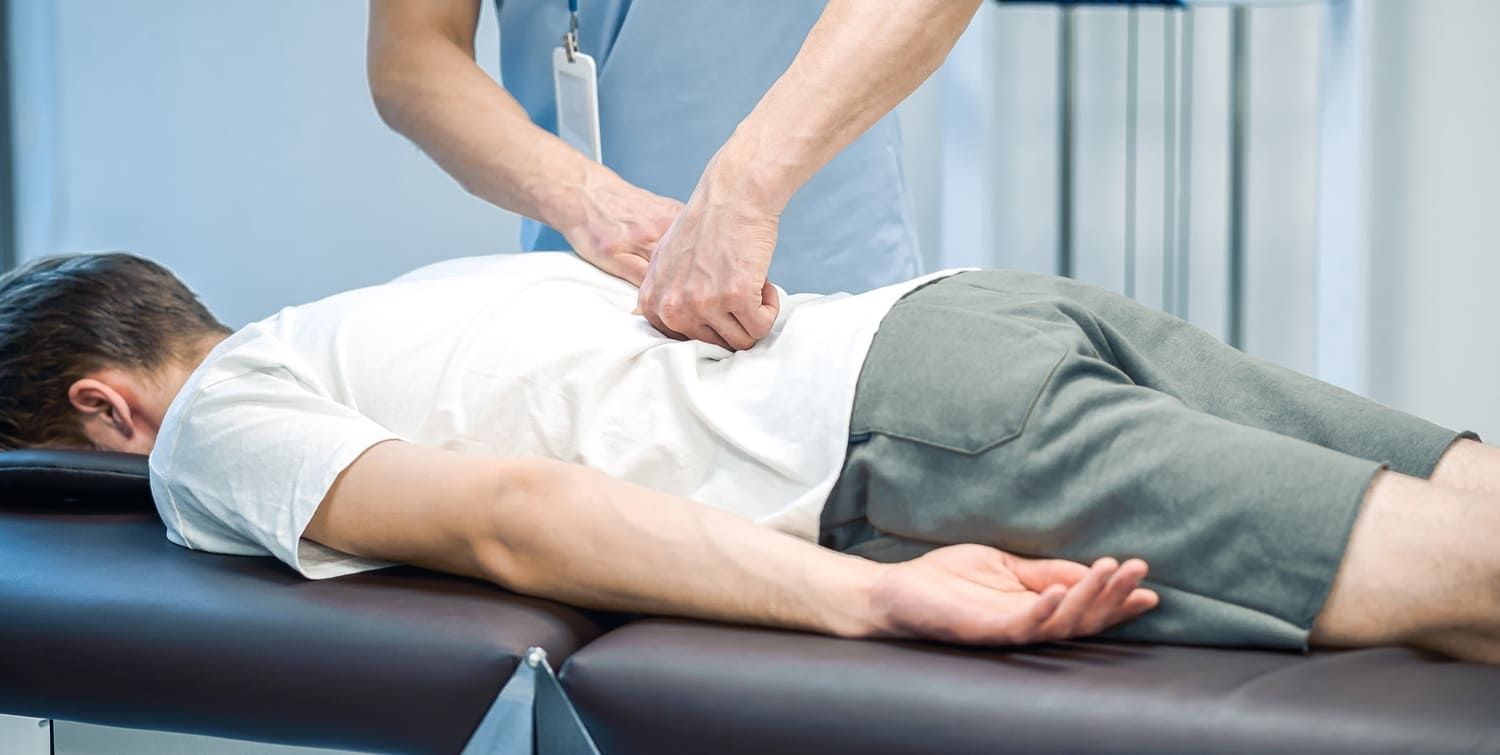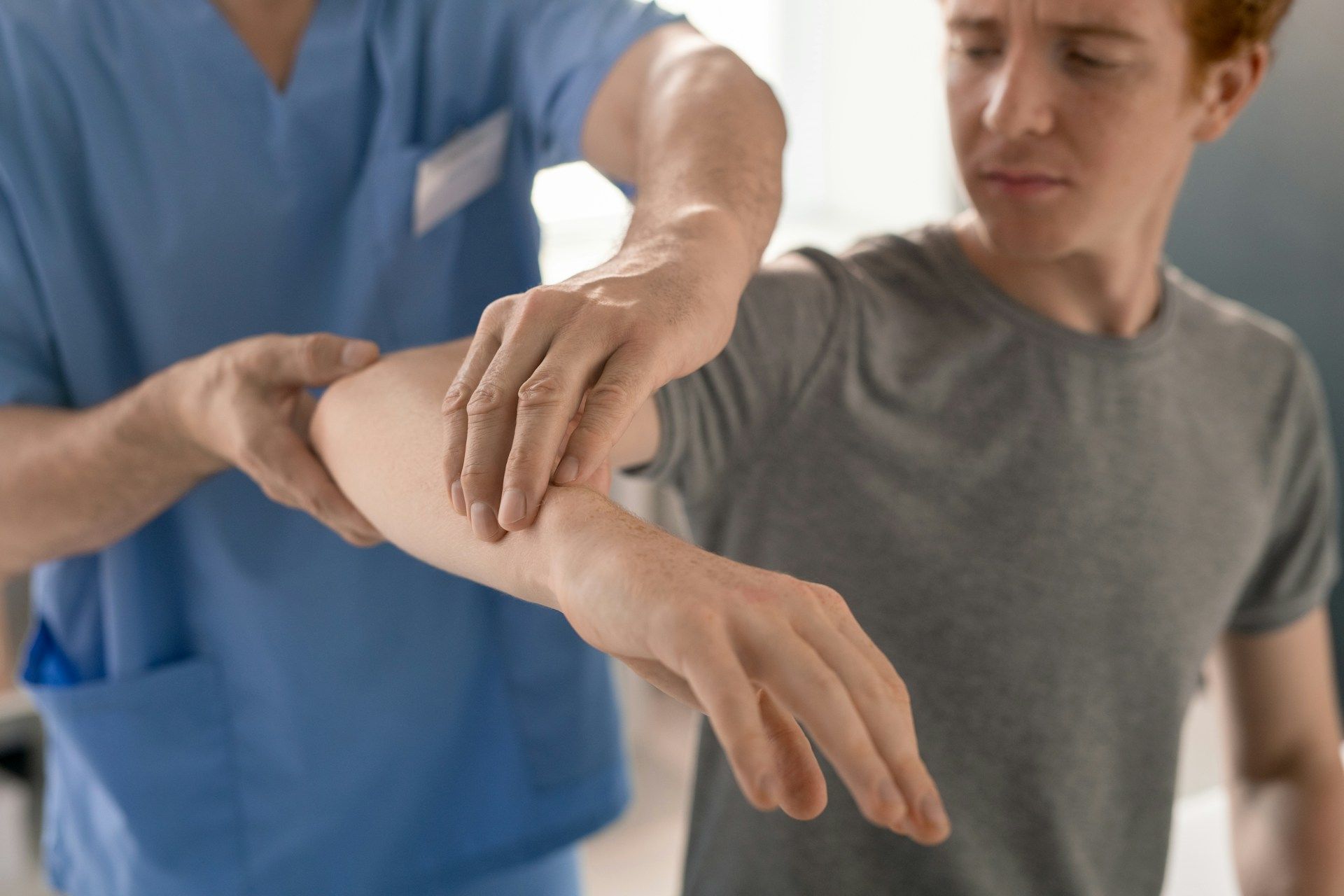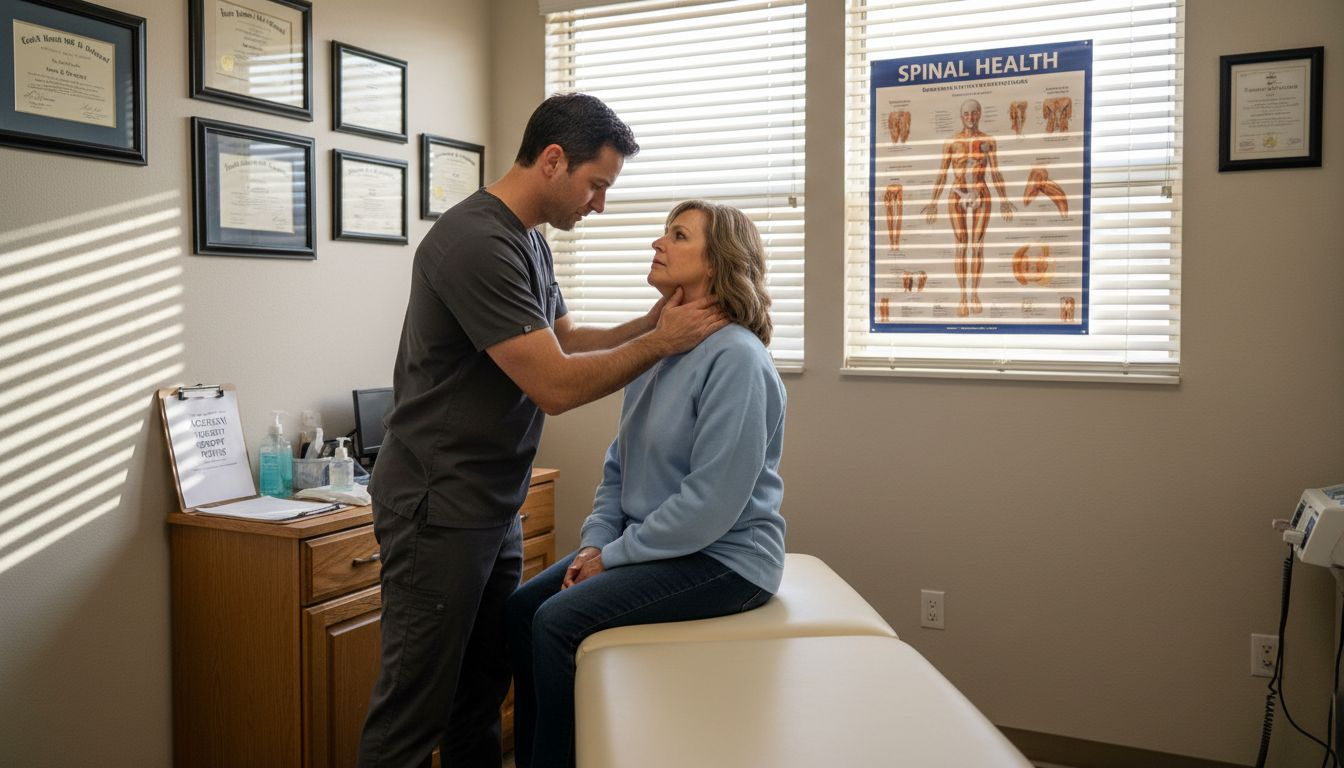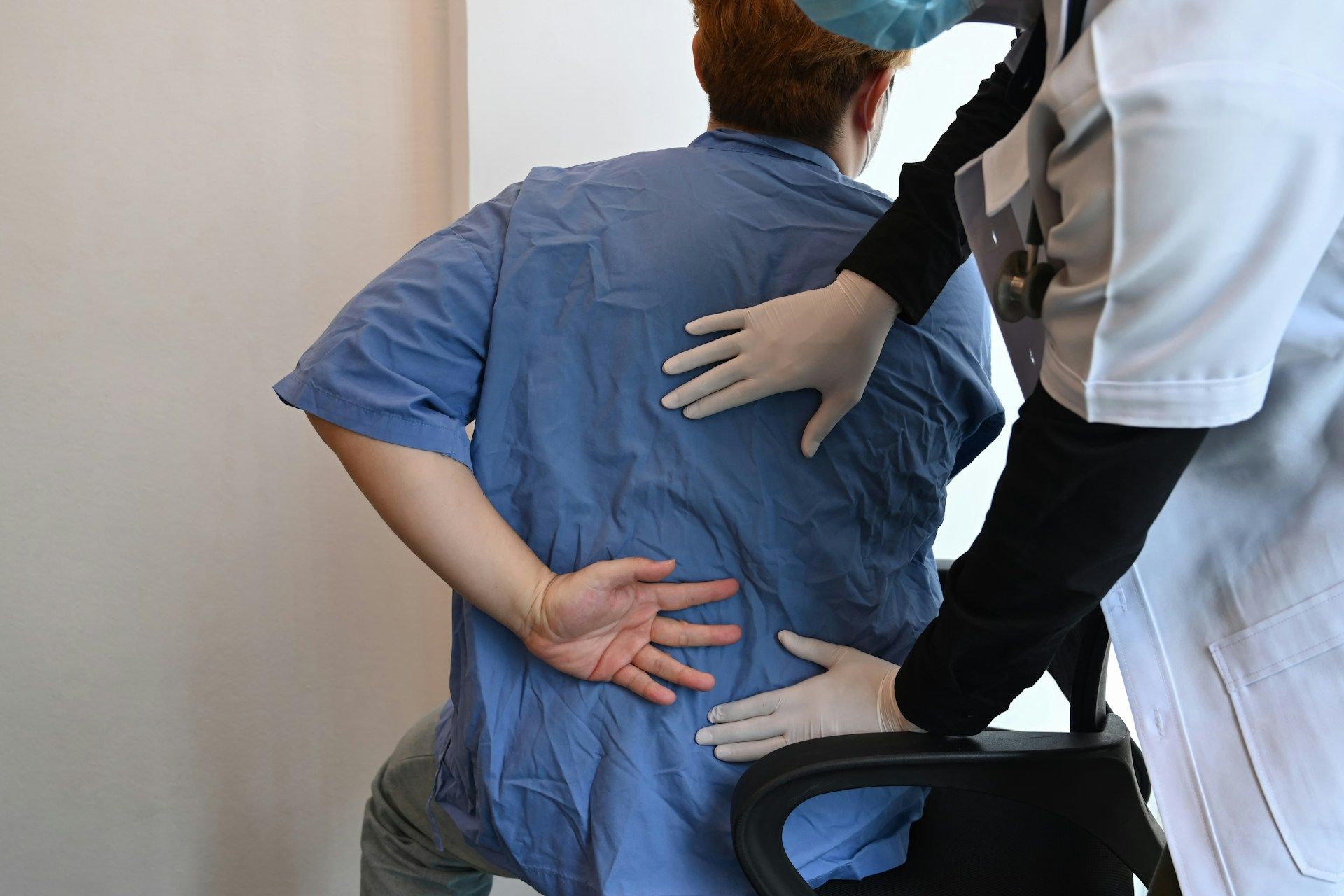Understanding Spinal Decompression Therapy for Back Pain
Are you one of the millions struggling with persistent back pain that keeps you from living your life to the fullest? Spinal decompression therapy offers a gentle, non-surgical path to easing pressure on your spine, helping to alleviate discomfort and boost your mobility. This guide dives deep into what non-surgical spinal decompression is, how it works its magic, the conditions it can help, its many advantages, what to expect during treatment, its proven effectiveness, costs and insurance, how it stacks up against other options, and how you can find expert care right here in Tampa Bay, Brandon, and Sarasota.

What Exactly Is Non-Surgical Spinal Decompression Therapy?
Think of non-surgical spinal decompression therapy as a sophisticated, motorized traction treatment. It's designed to carefully apply tension to your spine, creating a gentle negative pressure within your discs. This helps to draw bulging disc material back in and encourages vital nutrients to flow in, kickstarting the healing process. By gently separating your vertebrae, it enlarges the spaces between them, relieving pressure on nerves without any need for surgery. This advanced approach is a game-changer for conditions like herniated or bulging discs, sciatica, degenerative disc disease, and spinal stenosis.
Spinal Decompression Therapy: Your Key to Beating Back Pain
Spinal decompression therapy is a non-surgical treatment that can offer back pain relief by taking pressure off the neural elements of your spine. It can treat conditions such as bulging discs, herniated discs, pinched nerves, and sciatica.
Cleveland Clinic, Spinal Decompression Therapy: Lower Back Pain & Back Pain Relief
By easing the pressure on your discs, non-surgical spinal decompression supports your body's natural healing abilities and reduces inflammation, making it a much more appealing alternative to invasive procedures and lengthy recovery periods.
How Does Spinal Decompression Therapy Gently Stretch Your Spine?
Spinal decompression therapy works by precisely applying and then releasing traction forces. This is done using specialized equipment, like the advanced DRX9000 system, to gently lengthen your spine through a series of cycles.
Discover the DRX9000 System
The DRX9000 is an FDA-cleared, non-surgical spinal decompression system specifically designed to treat chronic back pain caused by compressed and degenerative spinal conditions. The DRX9000 uses traction to slowly and gently elongate the spine to increase the intervertebral disc spaces.
Trujillo Chiropractic Center, What is the DRX9000?
This carefully controlled stretching process achieves several key goals:
- It creates a negative pressure zone within your intervertebral discs.
- This encourages any bulging or herniated disc material to retract inward.
- It boosts the diffusion of oxygen, water, and essential nutrients into the disc.
- It helps to reduce the inflammatory chemicals that can irritate your spinal nerves.
By alternating between stretching and relaxation phases, the treatment effectively mimics your spine's natural unloading process and stimulates circulation within the disc. This promotes the restoration of normal disc height and function, all while soothing nerve irritation.
What Are the Key Anatomical Structures Involved?
Understanding the anatomy involved helps explain why this therapy is so effective:
| Structure | Its Role | How Therapy Helps |
|---|---|---|
| Vertebral Bodies | These are the main support structures of your spine. | Creating more space between them eases pressure on the discs nearby. |
| Intervertebral Discs | They act as cushions between your vertebrae. | Negative pressure helps pull disc material back towards the center, reducing herniation. |
| Spinal Nerves | These nerves transmit pain and motor signals throughout your body. | When discs are decompressed, it relieves pressure on these nerves, easing pain. |
| Facet Joints | These joints help guide your spine's movement. | Less compressive force means less stress and inflammation in these joints. |
| Ligaments & Muscles | They provide stability and enable movement of the spine. | Gentle stretching can help relax these supporting soft tissues, improving flexibility. |
The gentle separation of these structures triggers a series of healing responses that address both the source of pain and the restoration of function.
How Does Negative Intradiscal Pressure Promote Healing?
Negative intradiscal pressure is the key driver behind tissue regeneration and symptom relief:
- Disc Retraction: Lowered pressure inside the disc helps pull bulging or herniated material back toward the center.
- Nutrient Exchange: The low pressure enhances the movement of water, oxygen, and vital nutrients into the disc's structure.
- Fluid Rehydration: Better hydration helps restore the disc's height and resilience, allowing it to cushion your vertebrae more effectively.
By rebuilding disc integrity and encouraging the flow of anti-inflammatory fluids, this mechanism not only eases immediate pain but also supports long-term disc health and your overall mobility.
Which Conditions Can Spinal Decompression Therapy Treat?
Spinal decompression therapy is effective for a range of spinal issues by relieving pressure on discs, nerves, and joints:
- Herniated and Bulging Discs
- Sciatica and Pinched Nerves
- Degenerative Disc Disease and Spinal Stenosis
Let's explore how decompression provides targeted relief and functional improvements for each of these conditions.
How Does Spinal Decompression Help Herniated and Bulging Discs?
Spinal decompression works to reduce the protrusion of disc material by creating an inward vacuum effect. Patients often experience:
- Less irritation and inflammation of the nerve roots.
- A reduction in shooting or radiating pain down the limbs.
- A gradual return to the disc's normal shape.
You can typically start noticing symptom improvements within just a few sessions, and completing the full treatment protocol can lead to lasting relief and a lower risk of re-herniation.
Real Results: Spinal Decompression in Downey, CA
Studies have shown that spinal decompression therapy can be effective in treating herniated or bulging discs, with success rates ranging from 70% to 90%. Patients reported significant reductions in pain and improvements in mobility.
Reform Chiropractic, The Outcomes Of Spinal Decompression in Downey CA
Can Spinal Decompression Relieve Sciatica and Pinched Nerves?
Spinal decompression helps alleviate sciatica by decompressing the lumbar nerve roots, effectively breaking the pain cycle:
- It relieves pressure on the sciatic nerve, reducing radiating leg pain.
- It helps normalize nerve function, improving sensation and strength.
- It lowers the levels of inflammatory substances around compressed nerves.
As nerve impingement eases, patients can regain their mobility and function, experiencing fewer painful flare-ups.
What
Are the Benefits for Degenerative Disc Disease and Spinal Stenosis?
For those dealing with degenerative disc disease and spinal stenosis, decompression offers:
- Reduced mechanical stress on worn-out discs and joints.
- Less narrowing of the spinal canal by helping to restore disc height.
- Effective long-term management of chronic pain and stiffness.
Patients often report better posture, an increased range of motion, and a slower progression of degenerative changes.
What Are the Benefits of Non-Surgical Spinal Decompression Therapy?
Non-surgical spinal decompression offers a wealth of advantages focused on your well-being:
| Benefit | How It Works | The Result |
|---|---|---|
| Pain Relief | Decompression reduces nerve irritation. | Quick decrease in back and leg pain. |
| Improved Mobility | Restored disc height eases stiffness. | Enhanced flexibility and a greater range of motion. |
| Disc Healing | Boosts nutrient influx and fluid rehydration. | Better disc integrity and long-term spinal health. |
| Non-Invasive | Avoids incisions and general anesthesia. | Minimal risks and no surgical recovery period. |
| Faster Recovery | No post-operative restrictions. | Patients can return to their daily activities sooner. |
How Does Spinal Decompression Provide Pain Relief and Improve Mobility?
By reducing compressive forces on your nerves and discs, decompression:
- Eases mechanical nerve irritation, reducing both acute and chronic pain.
- Promotes relaxation of the muscles around your spine, leading to better posture.
- Facilitates gradual increases in spinal flexibility.
As your pain subsides, you'll find it easier and more comfortable to engage in rehabilitation exercises that further enhance your mobility.
Why Is It a Preferred Alternative to Surgery?
Non-surgical spinal decompression stands out because it:
- Eliminates surgical risks like infection and anesthesia complications.
- Doesn't require a hospital stay or extensive post-operative rehabilitation.
- Offers success rates comparable to surgical decompression (70–80%).
- Allows you to resume your normal activities immediately after sessions.
Many individuals looking to avoid the cost, downtime, and uncertainty associated with surgery choose decompression as their first line of treatment.
What Long-Term Improvements Can Patients Expect?
Over time, patients often experience:
- Sustained pain reduction that lasts for months or even years.
- A slowing down of degenerative changes in the treated spinal segments.
- Improved spinal biomechanics, reducing the risk of future injuries.
- An enhanced quality of life thanks to increased tolerance for activity.
These lasting benefits come from addressing the root cause of disc problems, not just masking the symptoms.
What Can Patients Expect During Spinal Decompression Treatment?
Understanding the patient journey can help demystify the process and set clear expectations from your first appointment to the very end.
How Long Does Each Session Last and What Is the Typical Treatment Protocol?
A typical decompression session lasts about 20–30 minutes and follows a structured plan:
- Initial Assessment: A thorough review of your medical history and any imaging you have.
- Treatment Sessions: Usually 15–30 sessions, scheduled 3–5 times per week.
- Progress Reviews: Regular check-ins to fine-tune the traction force and frequency.
- Maintenance Plan: Occasional follow-up sessions to help maintain your results.
Sticking consistently to the protocol is key to achieving optimal disc retraction and healing.
What Is the Patient Experience Like During Therapy?
Most patients find the experience to be:
- A gentle pulling sensation, without any sharp discomfort.
- Interspersed with relaxation phases that feel like natural spinal unloading.
- Comfortable enough to breathe and talk normally throughout the session.
- Providing an immediate sense of relief and decompression afterward.
Adjustable harnesses and cushioning are used to ensure you feel relaxed and secure throughout your treatment.
Are There Any Contraindications or Risks to Consider?
While spinal decompression is generally very safe, it's not suitable for everyone. It's typically not recommended for:
- Individuals who are pregnant or have an abdominal aortic aneurysm.
- Those with spinal fractures, tumors, or advanced osteoporosis.
- People with metal implants, pacemakers, or who have recently had spinal surgery.
Thorough screening and expert medical supervision help minimize any potential risks and ensure the treatment is right for you.

How Effective Is Spinal Decompression Therapy? What Are the Success Rates?
Clinical evidence consistently shows success rates between 71% and 89% for back pain and disc-related conditions, confirming decompression as a highly effective non-surgical intervention.
Research Confirms Spinal Decompression's Effectiveness
Most research has shown spinal decompression to be successful in 71% to 89% of patients. One study showed an 88.9% success rate after a six-week protocol.
Charleston Spine Institute, LLC, Research Shows Spinal Decompression's Effectiveness
What Do Clinical Studies Say About Treatment Outcomes?
Controlled trials have revealed impressive results:
| Condition Treated | Success Rate | Key Findings from Studies |
|---|---|---|
| Herniated Disc | 78% | Significant reduction in leg pain and disc rehydration observed. |
| Degenerative Disc Disease | 71% | Improved pain scores and functional ability reported. |
| Sciatica | 89% | Rapid nerve decompression and restoration of nerve health noted. |
How Does Spinal Decompression Compare to Surgical Alternatives?
When compared to surgical procedures like microdiscectomy or laminectomy, decompression therapy offers:
- Similar pain relief in appropriate cases (70–80%).
- No surgical risks and no hospital recovery time.
- A lower overall cost and a quicker return to work.
- A non-invasive approach that preserves your natural spinal anatomy.
Many patients opt for decompression to avoid the extended downtime and potential complications associated with surgery.
What Are Real Patient Success Stories from Tampa Bay and Surrounding Areas?
We've seen incredible transformations right here in our community:
- A 45-year-old teacher was able to return to full activity after 20 sessions, avoiding planned surgery.
- A weekend athlete completely eliminated sciatica pain within just one month of therapy.
- A retiree regained mobility that had been lost over years of dealing with degenerative disc disease.
These success stories are a testament to Essential ChiroCare’s patient-centered approach and our decades of experience in providing personalized care plans.
How Much Does Spinal Decompression Therapy Cost and Is It Covered by Insurance?
Understanding the costs involved empowers you to make informed decisions about your care and explore your financing options.
What Is the Average Cost per Session and for Full Treatment Plans
Pricing can vary depending on the specific equipment used and the clinic's location:
| Treatment Plan Option | Cost Per Session | Total Cost Range for Plan |
|---|---|---|
| Single Session | $50–$250 | N/A |
| 15–20 Sessions Package | — | $1,200–$4,500 |
| 20–30 Sessions Package | — | $2,000–$7,500 |
How Does Insurance Typically Handle Spinal Decompression Coverage?
Insurance coverage for spinal decompression can differ significantly:
- Some insurance plans may consider it experimental and not cover it.
- Coverage is more likely for workers' compensation or auto injury claims.
- Out-of-pocket expenses can often be partially covered by flexible spending accounts (FSAs) or health savings accounts (HSAs).
Our dedicated billing team is here to help with pre-authorizations and appeals to maximize your benefits.
Are There Financing or Payment Options Available?
To make treatment more accessible, we often offer:
- Interest-free financing plans through trusted third-party providers.
- In-house payment arrangements designed to fit your budget.
- Special discounts on package deals when you pay upfront for multi-session plans.
These flexible options make it easier for you to commit to the full course of care needed for optimal results.
How Does Spinal Decompression Therapy Differ from Traction and Other Treatments?
Understanding the distinctions helps you choose the most effective solution for your specific condition.
What Is the Difference Between Spinal Decompression and Traditional Traction?
| Feature | Traditional Traction | Spinal Decompression |
|---|---|---|
| Force Application | Applies a constant pull. | Uses cyclical tension and relaxation phases. |
| Pressure Effect | Primarily stretches the surface. | Creates negative intradiscal pressure for deeper effect. |
| Treatment Precision | Limited ability to adjust. | Computer-controlled modulation of force for precision. |
| Clinical Outcomes | Offers moderate relief. | Achieves higher success rates for disc retraction. |
How Does It Compare to Surgery and Medication for Back Pain?
Medication: Primarily offers temporary symptom relief; it doesn't address the underlying structural issues of the disc.
Surgery: Can provide definitive decompression but comes with higher risks and a longer recovery period.
Spinal Decompression: Strikes an excellent balance between effectiveness and safety, preserving your spinal integrity while promoting natural healing.
Patients seeking lasting relief often find spinal decompression therapy to be the ideal middle ground.
When Should Patients Consider Spinal Decompression Over Other Options?
Spinal decompression is particularly well-suited for individuals who:
- Prefer a non-invasive treatment approach.
- Have an MRI that confirms a disc herniation or bulge.
- Are looking to avoid the risks and downtime associated with surgery.
- Need a therapy that actively promotes long-term disc health.
Seeking early intervention with decompression can often prevent the condition from progressing to a point where more invasive procedures are necessary.
Where Can You Find Expert Spinal Decompression Therapy Near Me in Tampa Bay, Brandon, and Sarasota?
Essential ChiroCare brings together decades of clinical expertise and a deeply patient-focused approach to deliver state-of-the-art spinal decompression across multiple convenient Florida locations.
What Makes Essential ChiroCare’s Approach Unique?
Our practice is built on integrating:
- Personalized traction protocols precisely tailored to each patient’s unique anatomy.
- Cutting-edge DRX9000 technology for highly accurate decompression cycles.
- Collaborative multidisciplinary teams of experienced chiropractors and physical therapists.
- Continuous outcome monitoring to fine-tune force, frequency, and treatment duration.
This unwavering patient-first methodology ensures both your safety and the achievement of superior results.
How Can Patients Schedule a
Consultation for Spinal Decompression?
Ready to explore spinal decompression at Essential ChiroCare?
- Give our clinic a call to speak with a dedicated care coordinator.
- Complete a brief health questionnaire and allow us to review your imaging.
- Schedule an in-office consultation with one of our licensed specialists.
- Receive a personalized treatment plan and discuss your payment options.
Getting evaluated promptly is the first step toward experiencing relief and restoring your function.
Non-surgical spinal decompression therapy leverages precise mechanical innovation to effectively relieve back pain, accelerate disc healing, and restore mobility—all without the need for invasive surgery. By choosing Essential ChiroCare, you gain access to proven treatment protocols, the advanced DRX9000 technology, and a dedicated team committed to providing you with personalized, long-term relief and improved overall wellness.










